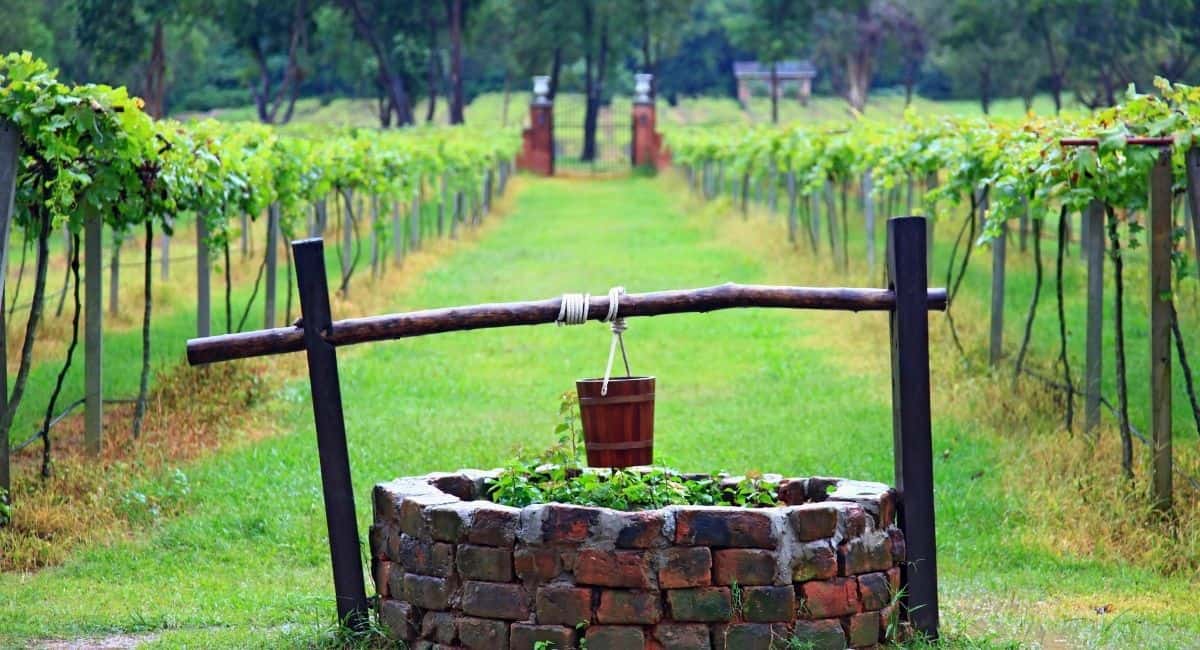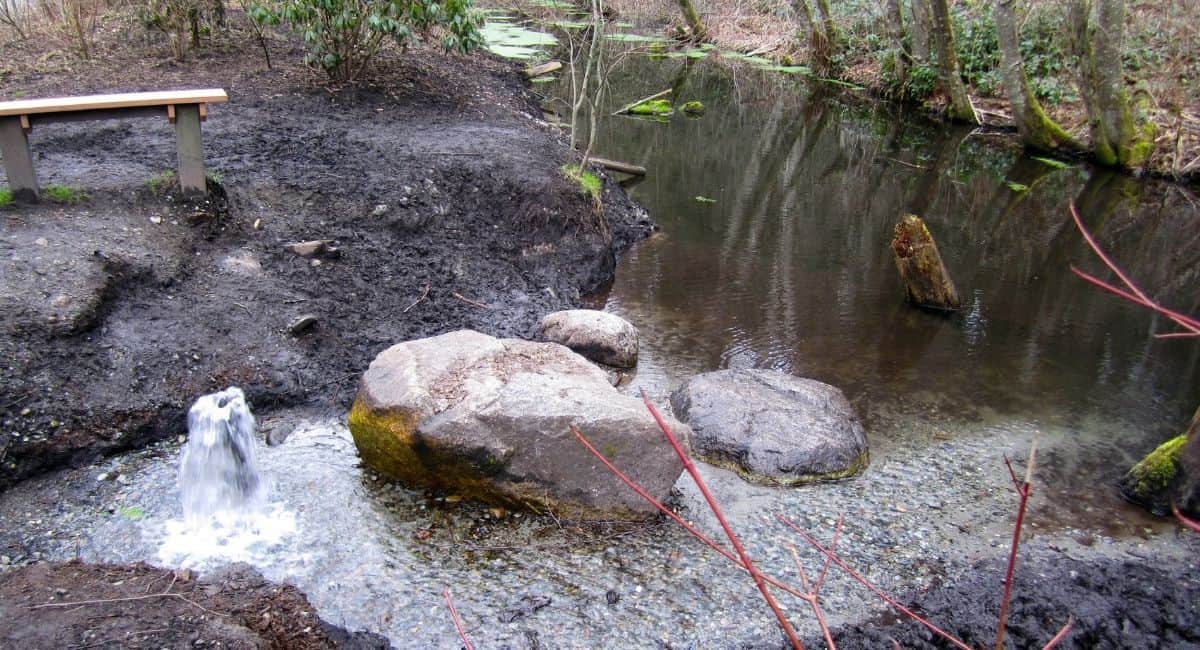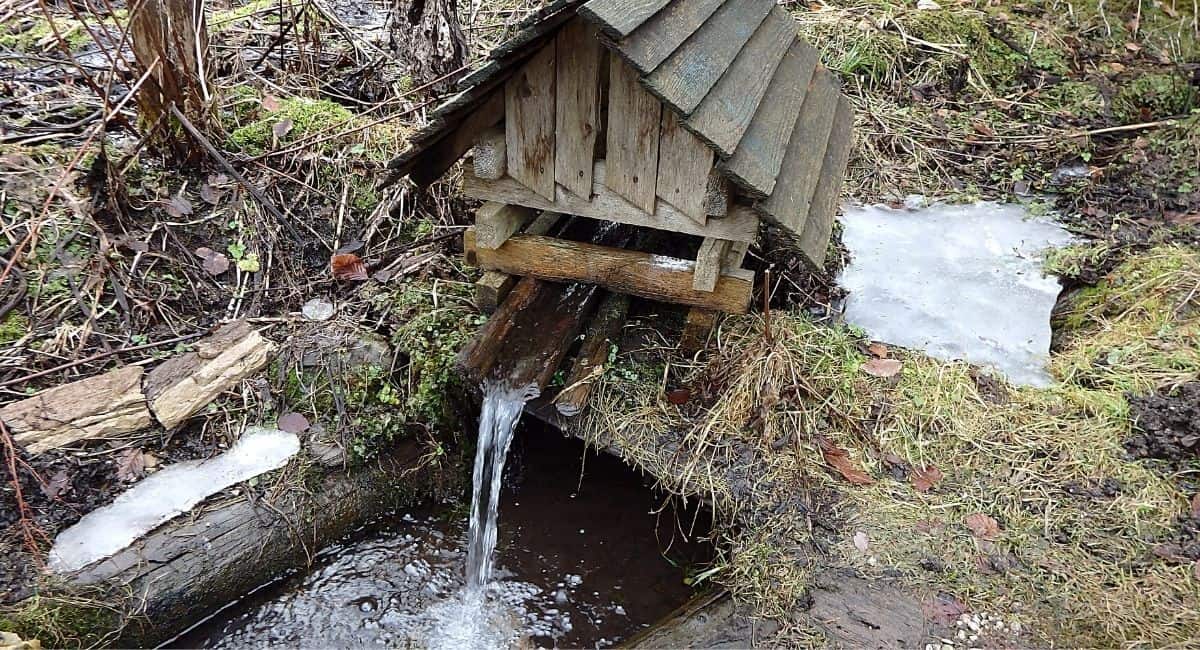We like to share product recommendations with you and hope you like them! Just to make you aware Water Filter Data may collect a small share of sales or other compensation from the links on this page.
Are you wondering how long it takes for a well to replenish? The answer depends on a number of different factors.
If the well is located in an area with regular rains and porous soil, has a low population, and has no neighboring farmlands, it will replenish at a rate of five gallons per minute.
If the well is not in a good condition, is located in a dry or drought-prone location, has a big population surrounding it, it will take significantly longer to refill.
It might take up to three months for a water well to fully replenish during droughts.
A well’s recovery rate gradually decreases over time, and they can sometimes only recover half of a gallon every minute.

Well Water
With the proper precautions, you might choose to drink well water, use it for cooking, cleaning, bathing, and other purposes.
Keep in mind that since private well water is often not treated or tested, you must be proactive in monitoring the quality and safety of your water source on your own.
The well water is especially vulnerable to water quality issues, including both aesthetic and health concerns. To guarantee that well water is safe and pleasant to drink, it must be tested on a regular basis and treated often.
Your groundwater well is more than simply a hole in the ground with a pump at the bottom. A properly built and completed water well is a complicated piece of engineering.
You should be prepared to interact with your well driller and grasp the anatomy of your water well. Let’s go through some of the aspects and terminologies of a household water well.
Where Does the Well Water Come From?
Most wells derive their water from aquifers rather than underground rivers. Aquifers are layers of rock and soil with tiny holes through which water flows.
There aren’t many big caves beneath the earth’s surface with tremendous torrents of water running through them.
Instead, groundwater drops slowly and softly through the microscopic gaps within rocks, between rocks, and between loose materials like sand and gravel. In reality, water in aquifers might take years or even ages to return to the surface.
The average flow rate of water in aquifers is 10 feet per year. As a result, if a region does not receive rain for a few weeks, the wells will not run empty.

What Are Aquifers?
Aquifers are often made up of pebbles, sand, rock, or shattered rock resembling limestone. Water then travels through these materials through their massive interconnecting holes.
The size of the pores in the rock or soil and the degree to which the gaps are connected can affect the rate at which groundwater flows.
Groundwater can be found just about anywhere. Depending on the circumstances, the groundwater might be deep, shallow, rising, or dropping.
Significant rainfall or melting snow can raise the water table, whereas extensive pumping of groundwater supplies might lower it.
How Does the New Water Drip Into the Ground?
New water seeps into the ground through pores and fissures in the rocks and soil, such as from rain or melting snow. Some of the water stays to the soil and pebbles at the surface, while some continues to drop below.
The layer of ground right under the surface is made up of a combination of rock, soil, water, and air bubbles. When gravity draws water deep enough into the earth, it fills all conceivable pores and fissures, which then pushes the air bubbles to rise.
The ground is saturated with water at this level. The water table denotes the border between unsaturated and saturated ground.
The exact location of the water table is determined by how much additional water is present, how rapidly the water drains, and how porous the earth is.
How Does the Well Water Replenish?
Groundwater supplies can be replenished by rain and snowmelt that flows down into the crevices and pores under the earth.
People in some places around the globe are facing extreme water shortages due to the groundwater getting used up quicker than it can naturally be replenished!
Aquifer water is able to come to the surface naturally through springs, lakes, or streams. Drilling a well into the aquifer can also be used to obtain groundwater. A well is a hole that’s drilled in the ground in order to gather groundwater.
This water can then be brought to the surface with a pump. If the water table descends below the well’s bottom, shallow wells might go dry. Certain wells do not require a pump because of the natural forces that move water up and out of the well.

Does Groundwater Replenish Itself?
Aquifers can be artificially refilled. On Long Island, for example, huge volumes of groundwater consumed for air conditioning are recycled to aquifers via recharge wells.
When water is pumped from the well, gravity forces water from the saturated rocks into the well to replenish the pumped water.
Pumps are used in water wells to transport water from the earth to your residence. The longevity of your well is determined by these pumps.
Signs that Your Well Is Dry
Many homeowners take their wells for granted. After all, a well that gets into a healthy aquifer can deliver clean and cold water for years.
However, with constant use or numerous dry seasons, your well may eventually dry up. But, it doesn’t happen overnight. By knowing the signs beforehand, you can prepare yourself for if your water supply does start failing.
Faucets Start Sputtering
When you open a faucet, it is typical for it to splutter. However, if the sputtering becomes more frequent, it might be an indication that there’s air in your plumbing system. This problem is often caused by faulty valves or a pipe leak.
It can also indicate a decrease in your groundwater level. Your well pump might be trying to pull water, but is actually sucking in air instead.
Muddy Water
Well water must be crystal clear to be used as drinking water. However, if it’s grainy or muddy or has an odd taste or odor, this is an indication that your well is running dry.
This is especially alarming if this type of water still comes out of your faucet despite the presence of a sediment filter. If your pump has a lot of quality water, sediments will usually remain untouched at the bottom of your well.
However, when the water level drops, the sediments become agitated and start to circulate the pump.
Low Water Pressure
If water begins trickling out of faucets throughout the home instead of bursting out, your water pressure is in danger. This can be caused by a variety of circumstances, such as a clogged pipe or an issue with the pressure tank.
However, it could be caused by depleting water supplies. Before declaring that your well has run dry, it’s essential to look for all of the indicators and speak with an expert.
Pump Operates Longer
When your pump begins to operate longer, that means that it is attempting to generate pressure and push the water out. Typically, the pump is installed deep underground.
When the water level lowers, your pump will constantly try and keep the tank full while maintaining water pressure. When your pump begins to switch on and off incessantly, this is another indication that your water level is low.
All of these indicators may show that your water well has run dry. However, they can indicate other water well issues, such as a broken pump, a fluctuation in groundwater, or a leak in your well casing.
That’s why it’s always a good idea to start by measuring your water level with a water level meter. Better yet, arrange a consultation with a specialist to be sure.
Conclusion
So, now you have the answers for how long it takes for a well to replenish!
Sometimes it depends on the nature of your well. For example, suppose you have a horizontal well that is drilled into the side of a hill. In this case, you’ll only get around 1/4 gallon every minute, but it’ll be consistent.
You won’t need a pump to get the water to your house because gravity will take care of everything. If you were to pump the water, the well would most certainly dry up for a while until it was replenished by the subsurface stream that supplies it.
Most wells, including vertical ones, operate similarly, with the exception that you must pump the water out of them. Drilling a hole into a large underground pool of water is unusual.
It is far more typical for water to infiltrate into the borehole through fissures and cracks. The time required to recharge will be determined by the water table.



